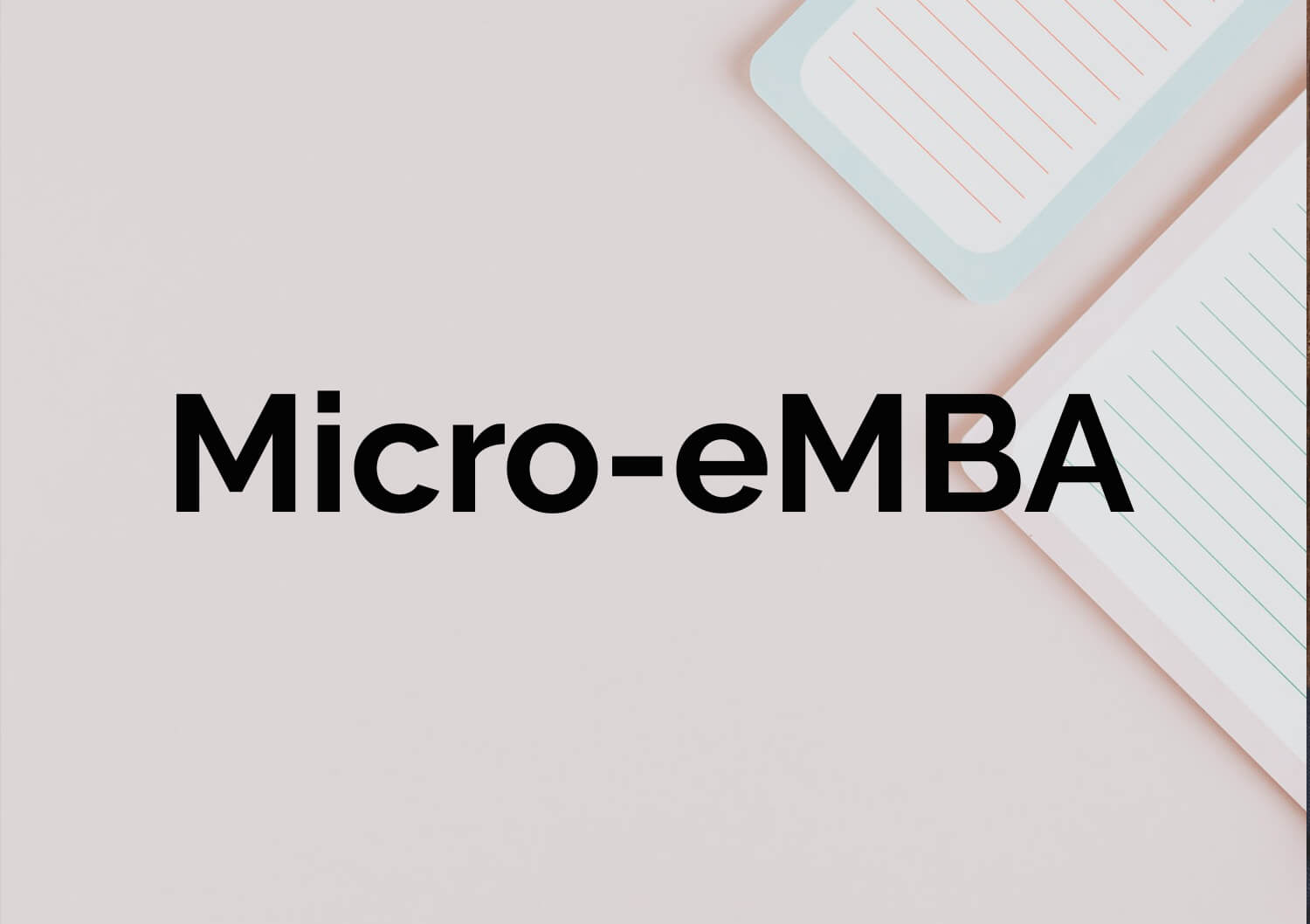Free Nonprofit Micro-eMBA Module #5: Building and Maintaining an Effective Board of Directors
© Copyright Carter McNamara, MBA, PhD, Authenticity Consulting, LLC.
Much of this program is based on materials adapted from the Nonprofit Capacity Building Toolkit(SM). Much of the content of this module was adapted from the guidebook, Field Guide to Develop and Operate Your Nonprofit Board of Directors.
This module is in the nonprofit organization development program. However, this module can also be used by anyone as a self-study exercise to learn more about building and maintaining a board of directors.
Sections of This Module Include the Following
- Introduction
- Outcomes
- Materials for Review
- Suggested Topics for Reflection and Discussion
- Activities to Build Systems and Practices
- Assessments
- Tracking Open Action Items
INTRODUCTION
If you are an incorporated nonprofit, it’s very likely that you have already at least the beginnings of a board of directors. Theory and law dictate that the board of directors is responsible to govern your organization. Typically, new boards of directors in a new organization work hands-on, almost as partners — or as a “working board” — with the chief executive. A wise CEO will see Board members almost as strategic partners, rather than as a necessary evil that corporations must have.
It’s not uncommon, especially for new organizations, to act as if they are lucky even to have anyone on their board. Wrong! You deserve — and should always expect — to have a very participative board that, no matter how hands-on they are at first, also attend to major decisions about the organization. Completion of this module will ensure that your board has the necessary components, policies and practices in place from which to develop a healthy governing board.
Note that you, as a learner in this program, can greatly enhance the development of your board by continuing to involve board members in discussions about topics and questions posed by this program.
NOTE ABOUT THE ORDER OF MODULES (AND SOME DUPLICATION WITH PREVIOUS MODULE ON ROLE OF CHIEF EXECUTIVE OFFICER): : The modules about starting an organization and about the role of chief executives briefly mention certain activities in regard to building a preliminary board of directors — there is a little bit of necessary duplication between these two modules. This module helps the learner to round out the board of directors and ensure they are fully functioning for the organization.
NOTE ABOUT BOARD COMMITTEES: Consider establishing a Board Development Committee (or Board Governance Committee) to review and help guide implementation the information in this learning module. Major activities and goals from this learning module could be incorporated in that Committee’s Sample Committee Work Plan.
NOTE ABOUT “CORPORATE” NONPROFITS: A nonprofit organization is wise to file in its state to be a corporation. The vast majority of nonprofits that get tax-exempt and/or charitable status with the Internal Revenue Service (in the United States) have corporate status. So understand that the term “corporate” on this page refers to nonprofit corporations.
Also consider
Related Library Topics
OUTCOMES
- Understand Roles and Responsibilities of a Board
- Adopt Board Policies
- Build Board Committees
- Recruit New Board Members
- Ensure Strong Participation of Board Members
- Prepare for Board and CEO Evaluations
- Build Board Calendar to Schedule All Operations
- Organize a Board Manual
- Train Board Members
- Assess the Health of Your Board Practices
MATERIALS FOR REVIEW
- The following materials will help you address each of the topics and learning activities in this module.
- NOTE: There are many materials included for review in this section. However, you do NOT need to review all of them in detail.
a) You do not need to follow links out of the following documents
b) You do not need to follow links in “Also see” sections
c) You do not need to review any materials marked as “nonprofit”
Board Roles and Responsibilities
- Overview of Board Roles and Responsibilities (read at least 5 articles in the “nonprofit” section and quickly scan some job descriptions)
- Some Legal Considerations for Board Members
- Sarbanes Oxley and Implications for Nonprofits
- Insurance Against Liability
Board Operations
Documents — Charter/Constitution/Articles, Operating Rules, Policies, etc.
- Articles of Incorporation (scan one in the “nonprofit” section)
- Corporate Bylaws (scan one in the “nonprofit” section get a sense for what’s in a bylaws)
- Corporate Resolutions (is a single act of approval to approve, eg,– scan one)
- Board Policies (scan the names of some of the policies)
Staffing the Board
- Staffing the Board
- Joining a Board (read a few articles)
- Sample Board of Directors Recruitment Grid
- Guidelines for Recruiting New Board Members (read all)
- Sample Contents of Board Member’s Manual (read all)
- Orienting New Members to Boards of Directors (read all)
- Basic Guidelines and Sample Agenda for Board Training Session (read all)
- Removing Members (read several)
Ensuring Successful Committees
Ensuring Successful Meetings
Evaluating the Board
Board and Staff Relations
Evaluating CEOs
SUGGESTED TOPICS FOR REFLECTION AND DISCUSSION
- Learners are strongly encouraged to discuss the following questions with peers, board members, management and employees, as appropriate.
Board Roles and Responsibilities
1. Name the five duties and ten responsibilities of boards (as listed on the materials included in your materials for review). (Note that various experts might offer a different mix of duties and responsibilities. The important point here is to get a basic sense of the overall responsibilities of a board.) (See Overview of Roles and Responsibilities of Corporate Board of Directors.)
2. To whom is a board of directors responsible, that is, to whom do they “report”? (See Overview of Roles and Responsibilities of Corporate Board of Directors.)
3. What is the board chair responsible for? Vice chair? Secretary? Treasurer? (See Sample Job Descriptions for Members of Boards of Directors.)
4. Test your knowledge of the roles of board and staff by completing the table at Board and Staff Responsibilities — Test Your Knowledge. Be sure to compare your answers to the table at Board and Staff Responsibilities .
Board Operations
1. What are the recurring major activities of a board of directors? (See Sample Board Operations Calendar.)
2. What are some of the recurring yearly activities that a Board should do? (See Sample Board Operations Calendar.)
3. What are at least five ideas to generate and sustain strong participation of board members? (See Ideas to Generate Participation in Committees.)
Board Policies
1. What is the purpose of board policies? (See Board Policies.)
2. What is the purpose of board bylaws? (See Corporate Bylaws.)
3. What is a board manual? Name as many board manual contents as you can. (See Sample Contents of Board Member’s Manual.)
4. What is a board resolution? (See Board Resolutions.)
Board Staffing (Recruiting, Orienting, Training, Informing)
1. What is the most important consideration when you set out to recruit new members to your board? (See Guidelines for Recruiting New Board Members.)
2. How many guidelines can you name for orienting employees? (See Orienting New Members to Boards of Directors.) Informing them on a regular basis? (See How Do We Keep Board Members Informed?)
3. How should you train your Board members? (See Basic Guidelines and Sample Agenda for Board Training Session.)
4. What should you consider when deciding the compensation to your Board members? (See Compensating Board Members.)
5. What’s involved in removing board members? (See Removing Members.)
Board Committees
1. What is the purpose of a board committee? (See Typical Types of Board Committees.)
2. What is a standing committee? Ad hoc committee? When should each type be used? (See Typical Types of Board Committees.)
3. How many committees can you name and what is the purpose of each? (See Typical Types of Board Committees.)
4. What is an advisory group (or committee or board)? (See Guidelines to Form and Advisory Group.)
5. What is a work plan for a committee? (See Sample of a Board of Directors Committee Work Plan.)
6. Can you name at least 4 of the ideas to generate participation in committees? (See Ideas to Generate Participation in Committees.)
Board Meetings
1. What is a board meeting agenda? How are they developed? (See Sample Board of Directors Meeting Agenda.)
2. What is the purpose of board meeting minutes? What should be included in the minutes? (See Basic Sample of Board of Directors Meeting Minutes.)
Board Evaluations
1. How does the board evaluate itself? What is considered during the evaluation? How often should the board evaluate itself? (See Board of Directors Self-Evaluation and Evaluating the Board of Directors.)
2. How does the board evaluate the chief executive officer? (See Guidelines for Board of Directors Evaluation of Chief Executive and Sample Form for Board’s Evaluation of the Chief Executive.)
Special Topic — Board Liabilities
1. Is your board aware of any potential liabilities? Should your board members consider getting any certain forms of insurance? (See Some Legal Considerations for Board Members and Insurance Against Liability.)
2. What are the ramifications of the Sarbanes–Oxley Act for your company? (See Sarbanes–Oxley Act.)
ACTIVITIES TO BUILD SYSTEMS AND PRACTICES
- Learners are strongly encouraged to complete the following activities, and share and discuss results with peers, board members, management and employees, as appropriate.
- Note that the roles of your board and employees will become more clear as you complete strategic planning and product planning later on in this program.
- As you proceed through the following activities, be sure to note any incomplete actions in the Action Item Planning List.
Specify Your Board’s Roles and Responsibilities
1. Clarify what your board will be doing and what your staff will be doing. Complete the Board and Staff Responsibilities — Test Your Knowledge according to the wishes of your board. You can compare your preferences to those suggested in the table at Board and Staff Responsibilities.
Authorize Up-to-Date Board Policies
1. Adopt an up-to-date and acceptable set of bylaws. Before the next meeting, the board chair and CEO should write a memo that highlights important points from the current bylaws. Or, they might make marks in the margin of the current bylaws as means to highlight important points. Include these highlights in the board packet of information that gets sent to each board member before the next meeting. Set aside 20 minutes in an upcoming board meeting to collect feedback about the current bylaws. Consider board resolutions to make any changes to the bylaws. Once changes have been made, consider a resolution to formally adopt the bylaws. (See Corporate Bylaws.)
2. What board policies will you need? Draft — and carefully enforce — a policy for board attendance. (See Board Attendance Policy (Sample).)
3. What other policies are required by Sarbanes–Oxley? Role of Audit Committee? Whistleblower? Document Retention/Destruction? (See The Sarbanes-Oxley Act and Implications for Nonprofit Organizations.)
Organizing Your Board Committees (Includes Recommendations)
1. What board committees should you have? You should have at least an executive committee that can meet between board meetings, if necessary. This committee could be comprised of chairs of other committees and/or officers of the board. To identify other needed committees, carefully consider the types of major issues that your organization faces and any strategic goals to be accomplished over the next year. What is the nature of these goals and issues, for example, audit, compensation, financial, board development and personnel? If possible, establish committees for each of the major types of issues and goals faced by our organization. (NOTE: See the following recommendations regarding board committees.) (See Typical Types of Board Committees.)
Recommendation: Establish the Following Initial Board Committees
1. Strongly consider establishing at least the following board committees. Each of the following committees can help you accomplish major sections of this Online For-Profit Organization development program. Each of the following committees should have its own work plan. The work plan should include goals to accomplish the major activities specified in the associated sections of this online program.
Strongly Suggested Standing Committees to Have:
a) Executive Committee — This committee can be comprised of chairs from other committees and/or officers of the board. (See Role of the Executive Committee.)
b) Board Governance Committee — This could be done by the executive committee for now. This committee also could include nominating, orienting and training new board members. (See Board Governance Committee.)
c) Marketing Committee — This committee helps to clarify whom programs can serve, pricing, collaborators, etc., along with getting the word out about the nonprofit.
d) Finance Committee — This committee is almost a requirement, so that board members take a strong role in understanding and approving finances.
e) Fundraising Committee — However, not all nonprofits need fundraising. (See Role of the Nonprofit Fundraising Committee.)
Other Standing Committees to Consider:
f) Personnel Committee (this committee can help with policies about volunteers, too)
g) Programs Committee (this can help with clarifying program goals and outcomes, and educating the board about programs)
Note that you will probably have much clearer idea about what committees to have when you get done with your strategic planning in an upcoming module. (See Description of Typical Committees.)
2. Quickly establish work plans for your committees. As soon as your board has approved the new organization of committees, be sure that each committee sets about to develop its own work plan. Using a work plan is one of the best ways for committees to stay effective and engaged. (See Sample of a Board of Directors Committee Work Plan.)
Staff Your Board With Needed Skills
1. Identify what skills are now needed by your board. Again, consider the nature of major issues and goals currently faced by your organization. Also reference the Sample Board of Directors Recruitment Grid. Write down what skills are needed.
2. Develop procedures for recruiting and orienting board members. Include steps to recruit members, orient members, get completed applications from board candidates and elect new members. Consider information in Guidelines for Recruiting New Board Members, Orienting New Members to Boards of Directors and Sample Board Application Form. Have the entire board review the procedures for acceptance and authorization.
3. Use your new procedures to begin recruiting new board members. (The size of the board is usually specified in the bylaws. You can recruit enough members to reach this size. If the size needs to be changed, consider a resolution to modify the bylaws.)
Ensure Strong Participation of Board Members (Board Meetings)
1. Get board packets out to members at least a week before each meeting. One of the clearest indicators to board members that the organization is not taking them seriously is if they don’t get materials in time for adequate review before board meetings. Write a procedure for your staff to always send out a packet of meeting-preparation information to board members at least one week before the next board meeting. In the packet, include at least the following:
a) agenda for the upcoming meeting
b) report from the chief executive about major accomplishments and current issues and plans over the next two months
c) financial reports, including at least a budget report and cash flow statement
d) materials that can help board members act on any major decisions expected from them in the next meeting
2. Expect nothing less than full (or excused) absence from meetings. What kind of attendance are you getting to current board meetings? Are you regularly getting at least a quorum of members? (The quorum is the minimum number of members that must be present in a meeting for that meeting and its processes to be considered official. The quorum is usually specified in the bylaws.) If you are not getting strong attendance, then be sure to enforce a Board Attendance Policy (Sample). If you don’t enforce this policy, then you have a major problem — the problem is that you aren’t taking it seriously to expect and pursue a strong board of directors.
3. The board’s worst enemy — the “numb out” factor. One of the first signs that a board is in trouble is when members have opinions that they don’t express during meetings. If you find yourself sitting in a board meeting and realize you have “numbed out”, then you’re not doing your duty as a board member. Do you need to follow any of the guidelines in Ideas to Generate Participation in Committees?
Ensure Your Board and Chief Executive are Really(!) Effective
1. Establish a procedure for regular board self-evaluations. Don’t just “go through the motions” and not evaluate whether the board is really effective or not. How does your board evaluate itself now? Do you have a procedure that has been accepted and authorized by board members? Is your board evaluating itself on a regular basis? The board should conduct evaluations on a yearly basis, or at least every two years. If the board isn’t evaluating itself on a regular basis, then make this point to discuss in an upcoming meeting. Consider information in Board of Directors Self-Evaluation and Evaluating the Board of Directors.
2. Establish a procedure to evaluate the chief executive on a regular basis — preferably once a year. Don’t just “go through the motions” and not evaluate whether the chief executive officer is really effective or not. Does your board evaluate your chief executive officer? How often? How are the results used? If you are not evaluating the chief executive on a regular basis, then why not? Make this a point to discuss in an upcoming meeting. Consider information in Guidelines for Board of Directors Evaluation of Chief Executive and Sample Form for Board’s Evaluation of the Chief Executive.
Clearly Communicate What Your Board Does (Board Operations)
1. Establish a calendar of the recurring major activities to be conducted by your board each year. The calendar should be accepted and authorized by the board. Consider information in the Sample Board Operations Calendar.
Ensure Adequate Protection from Liabilities
1. Conclude what insurance you do and don’t need for board members. Is your board aware of any potential liabilities? Should your board members consider getting any certain forms of insurance? Consider information in the Legal and Insurance Considerations for Board Members and Overview of Liability Insurance (including Directors’ and Officers’ Insurance).
Build a Board Manual for Each Board Member
1. Ensure that each board member has a policies manual that contains at least the following policies and materials. (See Sample Contents of Board Member’s Manual):
a) Description of roles and responsibilities of your board. (See Overview of Roles and Responsibilities of Corporate Board of Directors.)
b) Job descriptions for each board member and officer position. (See Sample Job Descriptions for Members of Boards of Directors.)
c) Descriptions of your board committees, their overall responsibilities and work plans. (See Typical Types of Board Committees.)
d) Policies for recruiting new members, orienting them, informing them and removing them. (See Joining, Recruiting, Orienting, Informing, Removing Board Members.)
e) Your board meeting attendance policy. (See Board Attendance Policy (Sample).)
f) Procedure for evaluating your board of directors. (See Board of Directors Self-Evaluation.)
g) Procedure for evaluating your chief executive officer. (See Guidelines for Evaluating the Chief Executive.)
h) Sample meeting agendas and board meeting minutes. (See Sample Board of Directors Meeting Agenda and Basic Sample of Board of Directors Meeting Minutes.)
i) Copies of your articles of incorporation (if applicable) and bylaws.
j) Copy of your strategic plan (if applicable).
k) Board operations calendar.
Train Board Members to Be Highly Effective (Board Training
Session)
1. Conduct a board training session to ensure each board member fully understands their role and has the necessary resources to carry out their role. Review information in the document Basic Guidelines and Sample Agenda for Board Training Session. Now draft a training session agenda that specifies the topics that will be covered in the session, who will address each topic and how. Schedule and carry out the training session.
ASSESSMENTS
Consider any or all of the following assessments as means to evaluate the health of your board of directors.
1. Board of Directors Self-Evaluation
2. Governance Indicators (Best Practices)
REMINDERS FOR THOSE IN THE ON-LINE DEVELOPMENT PROGRAM
1. Are you exchanging feedback with others about what you’re learning in this program?
2. Are you sticking to your study schedule for this program?
3. Are you practicing your basic skills in management and leadership, including in problem solving and decision making, planning and meeting management?
4. Are you communicating throughout your organization by using your skills in internal communications?
5. Are you managing yourself? How many hours a week are you working? Are you noticing any signs of stress? If so, what are you doing about it?
6. Are you reflecting on learnings from past modules and how they build on the learning in this module? For example, are you seeing your organization from a systems view, as explained in the module “Starting and Understanding Your Nonprofit?”
TRACKING OPEN ACTION ITEMS
1. One of the first indicators that an organization or a person is struggling is that open action items are not tracked and reviewed. (Open action items are required actions that have not yet been completed.) Instead, people only see and react to the latest “fires” in their workplaces or their lives. Whether open action items are critical to address now or not, they should not entirely be forgotten. Therefore, update and regularly review a list of open action items (identified while proceeding through this program) that includes listing each open action item, who is responsible to complete it, when it should be completed and any associated comments. When updating the list, consider action items as identified during discussions, learning activities and assessments in this module. Share and regularly review this action item list with the appropriate peers, board, management and employees in your organization. You can use the following Action Item Planning List. (At that Web address, a box might open, asking you which software application to open the document.)
2. If you have questions, consider posing them in the national, free, online discussion group hr.com, which is attended by many human resource and organization development experts.
(Learners in the organization development program can return to the home page of the organization development program.)
For the Category of Boards of Directors:
To round out your knowledge of this Library topic, you may want to review some related topics, available from the link below. Each of the related topics includes free, online resources.
Also, scan the Recommended Books listed below. They have been selected for their relevance and highly practical nature.









